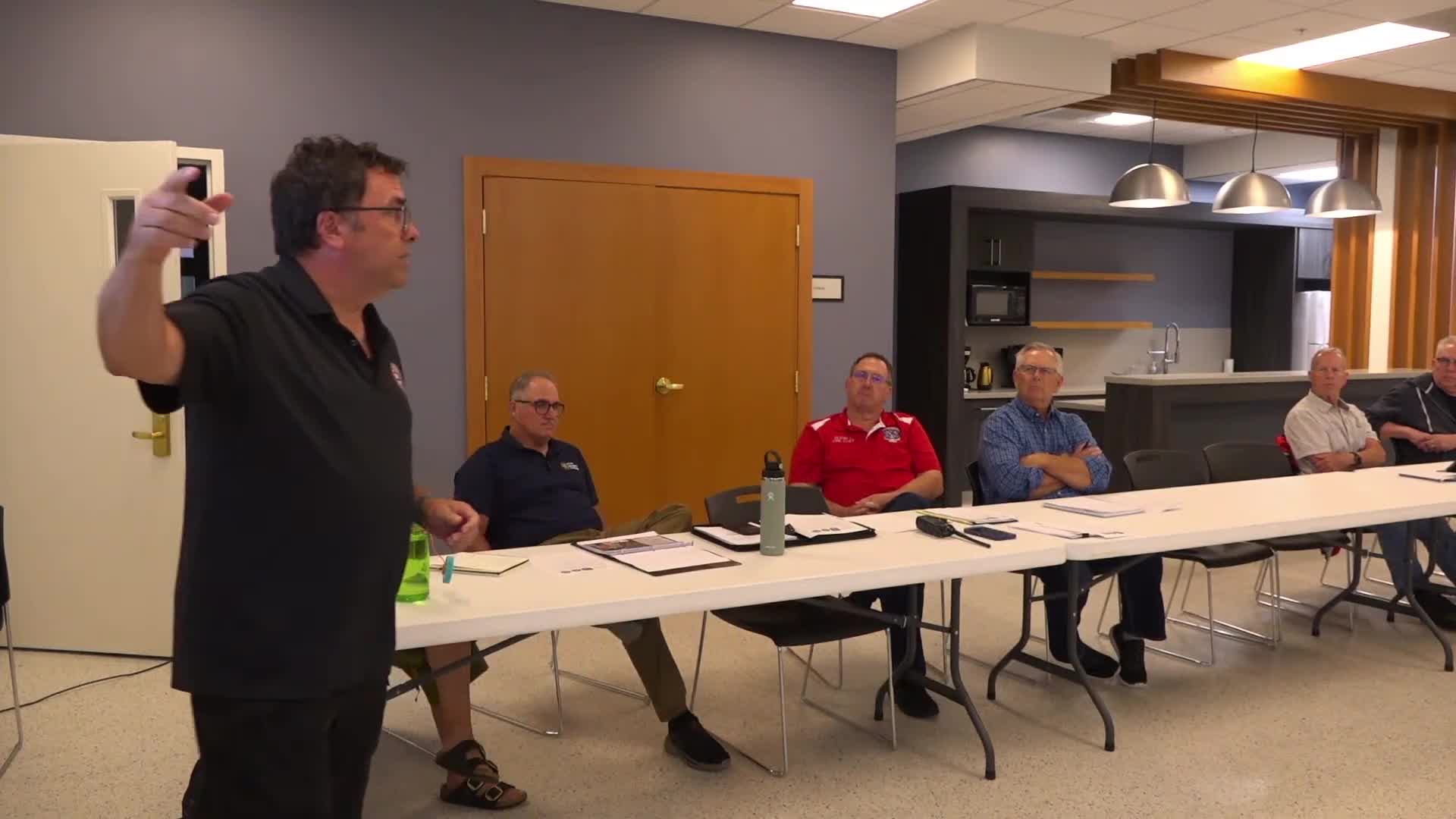Oregon Fire District addresses aging facilities amid rising population and emergency service demands
August 01, 2025 | Oregon, Dane County, Wisconsin
This article was created by AI summarizing key points discussed. AI makes mistakes, so for full details and context, please refer to the video of the full meeting. Please report any errors so we can fix them. Report an error »

In a recent meeting held at the Oregon Village Hall, local leaders gathered to discuss pressing issues surrounding the Fire and Emergency Medical Services (EMS) in the Oregon area. As the evening unfolded, the conversation revealed significant trends in population growth and the challenges posed by an aging demographic, which are expected to impact emergency services in the coming years.
The meeting highlighted a notable increase in the village's population, with projections indicating a continued upward trend. This growth is accompanied by an aging population, which has risen from 10% of residents aged 65 and older a decade ago to an anticipated 20% in the near future. This demographic shift is particularly concerning for EMS, as it correlates with a rise in service calls.
While fire service calls have stabilized, the meeting underscored a critical operational change: the Oregon Fire District no longer dispatches fire trucks for ambulance calls, a practice still observed in some neighboring areas. This decision aims to streamline operations and reduce redundancy, reflecting broader improvements in fire safety and prevention measures.
A key point of discussion was the district's lack of a ladder truck, a resource that neighboring communities possess. The absence of this equipment means that when a fire occurs, assistance from other districts arrives, on average, 12.5 minutes later. This delay can be crucial, as fires can double in size within minutes, emphasizing the need for local resources to respond swiftly.
The meeting also touched on the financial aspects of maintaining and upgrading fire services. Rising personnel costs and the need for expensive equipment replacements pose challenges for the district's budget. Leaders are exploring various options for facility improvements, including potential expansions or the construction of new stations to better serve the growing population.
As the Oregon Fire District awaits its next Insurance Services Office (ISO) rating, which influences insurance premiums for residents and businesses, the conversation remains focused on enhancing service efficiency and safety. With the current ISO rating at a level 4, there is hope that improvements could lead to lower insurance costs for the community.
In conclusion, the Oregon Joint Village Board Meeting served as a platform for addressing the evolving needs of the community's emergency services. As discussions continue, local leaders are tasked with making informed decisions that will shape the future of fire and EMS operations in the face of growth and change.
The meeting highlighted a notable increase in the village's population, with projections indicating a continued upward trend. This growth is accompanied by an aging population, which has risen from 10% of residents aged 65 and older a decade ago to an anticipated 20% in the near future. This demographic shift is particularly concerning for EMS, as it correlates with a rise in service calls.
While fire service calls have stabilized, the meeting underscored a critical operational change: the Oregon Fire District no longer dispatches fire trucks for ambulance calls, a practice still observed in some neighboring areas. This decision aims to streamline operations and reduce redundancy, reflecting broader improvements in fire safety and prevention measures.
A key point of discussion was the district's lack of a ladder truck, a resource that neighboring communities possess. The absence of this equipment means that when a fire occurs, assistance from other districts arrives, on average, 12.5 minutes later. This delay can be crucial, as fires can double in size within minutes, emphasizing the need for local resources to respond swiftly.
The meeting also touched on the financial aspects of maintaining and upgrading fire services. Rising personnel costs and the need for expensive equipment replacements pose challenges for the district's budget. Leaders are exploring various options for facility improvements, including potential expansions or the construction of new stations to better serve the growing population.
As the Oregon Fire District awaits its next Insurance Services Office (ISO) rating, which influences insurance premiums for residents and businesses, the conversation remains focused on enhancing service efficiency and safety. With the current ISO rating at a level 4, there is hope that improvements could lead to lower insurance costs for the community.
In conclusion, the Oregon Joint Village Board Meeting served as a platform for addressing the evolving needs of the community's emergency services. As discussions continue, local leaders are tasked with making informed decisions that will shape the future of fire and EMS operations in the face of growth and change.
View full meeting
This article is based on a recent meeting—watch the full video and explore the complete transcript for deeper insights into the discussion.
View full meeting
